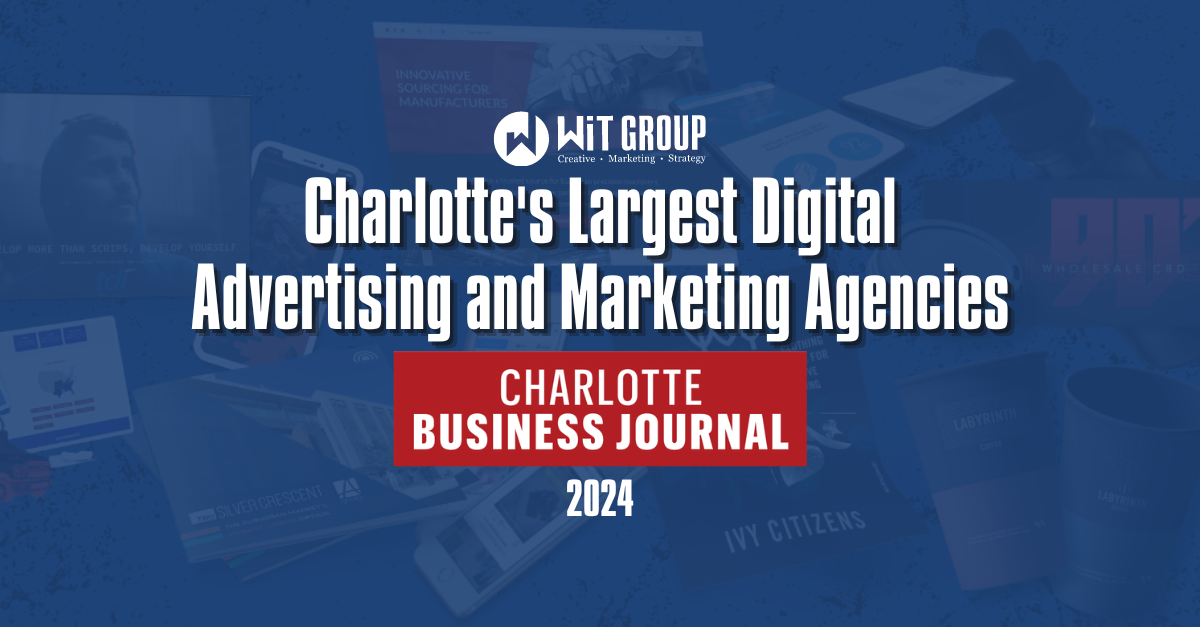Generating leads through inbound marketing is an effective strategy that can aid businesses in converting prospective clients into loyal customers. However, it’s worth noting that the approach to lead generation is significantly different for B2C and B2B businesses. Implementing a strategic and intentional approach to your inbound lead generation tactics that are tailored to your business model and customer profile is essential to achieving success.
B2C Lead Generation
When it comes to B2C lead generation, simplicity, and swift action are key. The primary focus is on conversion rate, meaning that factors like education and brand awareness take a backseat to the urgency of getting a prospect to take action. Eye-catching headlines, visually appealing images, and compelling copy are essential components of B2C lead generation. It’s also crucial to streamline the lead capture process for maximum efficiency and a higher conversion rate.

B2B Lead Generation
B2B lead generation requires more stringent lead qualification to ensure the right match between businesses and prospects. Extensive research into the lead’s background, goals, and viability is necessary for proper vetting. Building relationships with every lead is an essential component of B2B lead generation since long-term clients typically stem from such connections. As such, effective lead nurturing and education campaigns should also be in place.
Driving B2B Leads to Reach More B2B Clients
In accordance with Capterra’s survey, 84% of B2B businesses consider word-of-mouth marketing to be the most effective way to reach new clients. While this tactic reigns supreme, other approaches such as content marketing and digital advertising are also essential in generating leads for B2B companies. Inbound lead generation must be adapted to suit the specific needs of each business while prioritizing lead qualification and relationship building. Utilizing SEO and paid search advertising is an excellent way to reach B2B clients, but it’s equally vital to focus on producing high-quality work that impresses them. Ultimately, the goal of B2B lead generation is to establish a strong connection with the client and secure a recommendation through word-of-mouth.
Validation is also extremely important when it comes to B2B lead generation and therefore there needs to be additional attention the appearance, branding, and professionalism of a web page, sales collateral, and social channels. Testimonials and referrals are also much more important in most B2B inbound marketing strategies than for B2C.
Word-Of-Mouth Marketing and its Effectiveness in B2B Lead Generation
B2B companies can significantly benefit from word-of-mouth marketing as it allows leads to obtain a comprehensive understanding of a company’s practices and customer service even before interacting with a sales representative. In fact, when leads hear positive reviews from satisfied clients, they are far more likely to convert compared to those with no prior knowledge of a business’s services or reputation. What’s more, word-of-mouth marketing generates cost-effective, organic leads, making it a perfect lead-generation technique for businesses working with limited budgets. Promoting word-of-mouth marketing also enhances brand credibility and establishes trust among prospects, resulting in increased conversions over time. Therefore, every B2B lead generation strategy must have word-of-mouth marketing as a critical component. By executing well-planned, strategic initiatives, businesses can drive more leads and establish strong relationships with potential clients.
Building an SEO Strategy for a B2B Company
Incorporating search engine optimization (SEO) into a lead generation strategy can significantly boost a B2B business’s online visibility. This approach involves optimizing website content for specific keywords to rank higher in online search results, driving more leads to their website. Accompanied by targeted digital advertising on platforms like Google Ads and LinkedIn, where several B2B professionals frequent, businesses can ensure that lead-capture forms and other lead-generating resources are visible to the appropriate audience.
Crafting an effective B2B SEO strategy requires a proactive approach to planning and research. At the outset, identifying the target audience and the most relevant keywords for lead generation is an essential step. Choosing long-tail keywords is more beneficial since they tend to generate qualified leads. Additionally, placing lead capture forms in prime locations on the website will streamline the process for potential customers to provide their contact information. After determining the targeted keywords, businesses need to produce content specifically tailored to them, while ensuring that it’s optimized for search engines. This entails integrating optimized titles, headings, and meta descriptions to improve searchability. Lastly, monitoring lead conversion rates over time is a vital part of evaluating the SEO strategy’s effectiveness. By closely monitoring lead conversions, businesses can refine their lead generation approaches to optimize conversion rates and improve lead capture.
When it comes to B2C lead generation, companies often rely on creating emotional connections with their clients. As opposed to B2B strategies, content marketing plays an important role in B2C campaigns as it enables businesses to showcase the benefits of their products or services in a captivating manner. Apart from content marketing, lead generation for B2C should also concentrate on social media platforms like Instagram, YouTube, and Facebook, where potential customers are most active. These platforms provide direct access to customers, making it easier for companies to reach out and build relationships with them.

Need Help With Your Digital Marketing?
Building Paid Ad Campaigns to Reach B2B Clients
Using paid online advertising campaigns is a proven lead-generation technique for B2B companies. By leveraging paid ads, businesses can target potential customers in their desired market, while collecting vital lead data like contact information and interests. Measuring the success of ad campaigns over time requires monitoring lead conversion rates closely. With a systematic observation of these rates, companies can develop effective lead-generation tactics that maximize lead capture and optimize conversion rates.
Differences Between B2C and B2B Paid Online Advertising
There is a notable distinction between utilizing paid online advertising for lead generation in B2B and B2C companies. B2B paid ads are typically more targeted and concentrate on lead capture. Conversely, B2C lead generation campaigns prioritize emotional connection with potential clients and focus on brand awareness.
An example of how B2B and B2C companies utilize paid online advertising can be seen in their platform selection. A B2B company may use LinkedIn Ads to target professionals with specific job titles or interests related to their offered products. Conversely, a B2C lead generator may opt for Instagram Ads or YouTube Ads to generate emotional connections with potential customers through relatable content. Ultimately, businesses should craft their lead-generation tactics according to their target audience.
Building a B2C Lead Generation Strategy
The process of lead generation for B2C companies involves a different approach compared to B2B companies. Building emotional connections with potential customers through creative content marketing and social media is fundamental. By using content marketing, businesses can highlight the benefits of their products or services, drawing the attention of their customers emotionally. Meanwhile, direct customer reach is achievable through social media platforms such as Instagram, Youtube, and Facebook. As capturing data on potential customers is essential, it can further create direct communication lines to the target market; thus, facilitating advanced retargeting and data-driven optimization for email marketing.
Building a successful lead generation strategy for B2C companies requires the right combination of marketing tactics. The key steps include creating targeted content, optimizing it for lead capture, and tracking lead conversion rates over time. Additionally, businesses should be sure to utilize social media platforms and paid online advertising campaigns to reach potential customers directly and build emotional connections with them.
In order to build a flourishing lead generation strategy for B2C companies, it takes a well-crafted blend of effective marketing tactics. The crucial steps encompass developing personalized content, perfecting it for capturing leads, and monitoring conversion rates of leads. Also, to grow a stronger relationship with potential customers, it’s crucial for businesses to use social media platforms and online paid advertising campaigns directly. These tactics can help create an emotional bond with the audience and expand the reach of your brand.
To craft a B2C lead generation strategy that aligns with their business goals and target audience, companies can follow these steps:
Identifying Customer Pain Points
When conducting B2C lead generation campaigns, it’s important to pay attention to customer complaints or concerns that might cause them discomfort or dissatisfaction. It is crucial to actively listen to your customers and seek to understand how you can address their needs and improve their overall experience.
Create Personalized Content to Solve Customer Pain Points
Create content that speaks directly to your customers’ requirements. Whether it’s through blog posts, videos, or webinars, providing useful and personalized advice on these specific concerns ensures that your customers can identify your product or service as the solution to their specific needs.
Optimizing Content for Search Engines
Ensure your content is easily discoverable for potential customers by optimizing it for search engines. Utilize relevant keywords, as well as internal and external links, to enhance the visibility of your lead-generation content.
Incorporating Social Media Platforms
Social media platforms like Instagram and YouTube offer an excellent opportunity to create content that not only emotionally resonates with potential clients but also helps increase brand awareness and captures lead information directly from the platform. By leveraging these platforms, businesses can reach millions of users and create a solid online presence for their brand. So, it’s essential to craft impactful and engaging content that will connect with your target audience, which will help build a loyal customer base.
In conclusion, lead generation for B2B and B2C companies requires different tactics, as each type of business has its own set of goals and target audiences. A successful lead generation strategy should be tailored to the specific needs of the business in order to capture leads and convert them successfully.

Need Help With Your Digital Marketing?
Related Articles
Google Ads Success Stories
Google Ads has become an indispensable tool for businesses aiming to expand their online presence and boost sales. These real success stories from various clients in various industries highlight the power of Google Ads in driving tangible results. From startups and...
How Google Measures Search Quality
Google, the leading search engine, handles billions of searches every day. However, many marketers, business owners, and advertisers wonder how Google delivers useful, high-quality search results. The answer lies in Google's various methods, including user surveys,...
WiT Group Named Among Charlotte’s Largest Digital Advertising and Marketing Agencies
We’re excited to share some incredible news! The Charlotte Business Journal has recognized WiT Group in the following lists for 2024: Charlotte’s largest digital advertising and marketing agencies Top-earning advertising and marketing agencies Largest advertising and...
Stay Up to Date With The Latest News & Updates
Join Our Newsletter
Stay up to date with the latest news and marketing tips!




Recent Comments